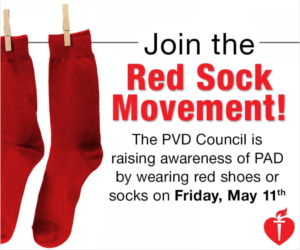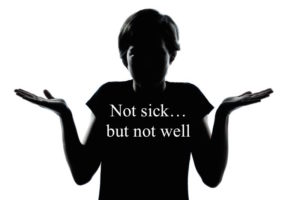FAQs about Dialysis Patients
We’ve just started a new academic year, so now’s a good time to review some uncertainties and myths surrounding the care of dialysis patients.
Hey the patient is on chronic dialysis = total kidney failure, therefore iodinated CT contrast is A-Okay?
It depends.
Residual kidney function (the patient still has urine output) means better outcomes in terms of survival, nutrition, quality of life and better control of electrolytes and anemia. The kidneys work 24/7 to clear toxins and volume, and are better than dialysis at clearing middle molecules like phosphorus and protein-bound uremic toxins.
So if the dialysis patient still makes urine, avoid nephrotoxins including iodinated CT contrast unless there is strong medical necessity. Protect those kidneys!
Well we really need to give the CT contrast, so we’ll just coordinate dialysis afterward and that will save the day right?
Evidence is mixed but suggests that dialyzing out IV contrast is ineffective. You sucker punched the kidneys, and there’s no take-backsies.
However if there is concern that the amount of contrast led to volume overload and is compromising lung function – dialysis can remove volume and help with that.
How about MRI gadolinium contrast? Is the answer also “it depends”?
Gadolinium = never ok! Nephrogenic systemic fibrosis. Rare, but BAD. Look it up.
The nephrologist threw a fit when I asked for a PICC line for IV antibiotics. Why is she so loco?
Please recite daily: NO PICC LINES IN DIALYSIS PATIENTS. This also applies to predialysis patients with advanced chronic kidney disease who are heading toward dialysis dependence.
To do dialysis requires a dialysis access. For hemodialysis patients, the preferred access is an arm arteriovenous fistula (AVF). For peritoneal dialysis patients, peritoneal membrane failure eventually occurs and they will have to switch to hemodialysis. PICC lines cause vein trauma thus predisposing to future AVF failure. Along the same lines, radial artery approach for left heart cath should be avoided in patients with advanced chronic kidney disease.
Switch to PO antibiotics if possible. Or pick IV antibiotics that can be given during dialysis (cefazolin, vancomycin, cefepime are examples). If prolonged IV access is absolutely necessary, a small-bore internal jugular tunneled catheter (like a Hickman) can be considered.
There will be exceptions based on an individual patient’s clinical situation and life expectancy – please discuss with your favorite nephrologist!
The dialysis diet is low sodium, low phosphorus, low potassium. My patient is diabetic so she can’t even have carbs. Can she eat anything??
We’re not saying zero. Daily limits are sodium 2 gm, potassium 2 gm, phosphorus 800 mg. The dialysis diet is complex – that’s why every dialysis unit has dedicated dietician(s).
She should eat a lot of protein. Dialysis is a catabolic treatment and patients are encouraged to eat high protein diets (1.2-1.5 g/kg/day) to avoid protein calorie malnutrition.
Are all renal supplement drinks good for all kidney disease patients?
No! The supplement drinks that are for dialysis patients (Nepro, Novasource) are HIGH protein (see above, dialysis patients are recommended to eat a lot of protein). These are NOT good for predialysis patients with advanced chronic kidney disease, who need to be on LOW protein diet which may be beneficial in slowing progression of kidney failure. An example of a low-protein supplement for predialysis patients is Suplena Carb Steady.
My patient is on chronic hemodialysis and does not have a clinic follow up scheduled with his nephrologist. What is this craziness?
Most hemodialysis patients are in-center (they go for scheduled dialysis treatments at a dialysis unit, typically 3 days per week) and their nephrologist will round on them at the dialysis center. So they don’t need a separate clinic appointment.
Patients who do home dialysis will see their nephrologist in clinic once per month.
My hemodialysis patient was started on a blood thinner. Do I need to let the nephrologist know?
Please ALWAYS let the nephrologist know when a dialysis patient is started on warfarin or apixaban. (Apixaban is currently the only FDA-approved direct oral anticoagulant for dialysis patients.) Heparin is often used in the dialyzer circuit to prevent clotting. If a patient is started on anticoagulation, heparin may be held since the oral anticoagulant may be sufficient.
From a big picture standpoint, the use of anticoagulation in dialysis remains controversial (see my prior blog).
Ok we decided anticoagulation is no longer needed (or maybe the patient self-discontinued her apixaban… true story). Everything ok now?
On the flip side, if oral anticoagulation is stopped, please notify the nephrologist so that heparin can be re-introduced. If a dialyzer circuit clots and blood cannot be returned to the patient, this is equivalent to losing a half unit of blood.

Wei Ling Lau, MD FASN is Assistant Professor in Nephrology at University of California-Irvine. She is currently funded by an AHA Innovative Research Grant, and has been a speaker for CardioRenal University and the American Society of Nephrology. Follow her on Twitter @Kidneys1st.

 About 1 in 10 people worldwide, and >20 million in the US, have chronic kidney disease.
About 1 in 10 people worldwide, and >20 million in the US, have chronic kidney disease.